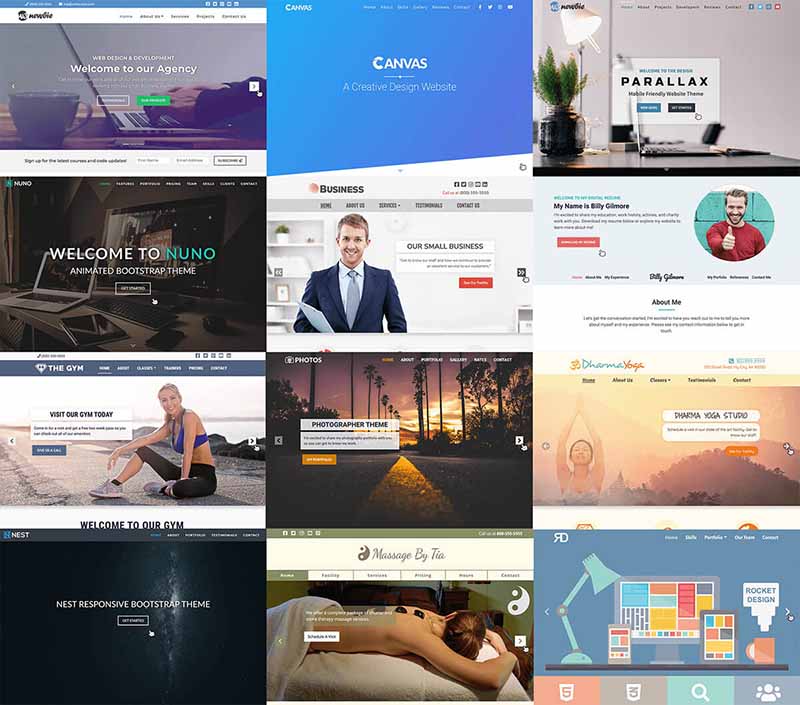HTML Accessibility
HTML accessibility practices are used for designing and developing web content that can be used by people with disabilities, including those with visual, auditory, motor, or cognitive impairments. It ensures that everyone can access and interact with web content equally, regardless of their abilities or the technologies they use.
Key principles of HTML accessibility:
- Perceivable: Content must be presented in a way that all users can perceive it, even with different senses or assistive technologies.
- Operable: Users must be able to navigate and interact with the content effectively, including those with limited motor skills or reliance on alternative input methods.
- Understandable: Content and its structure must be clear and easy to comprehend for users with varying cognitive abilities or language skills.
- Robust: Content should be compatible with current and future assistive technologies, ensuring its ongoing accessibility.
Common HTML Accessibility Techniques:
- Semantic HTML: Use semantic elements like
<header>,<nav>,<main>,<article>,<aside>,<section>, and<footer>to clearly convey the meaning and structure of content. This aids screen readers and other assistive technologies in understanding the page’s organization. - Alternative text (
altattribute): Provide meaningful descriptions for images using thealtattribute, ensuring users who cannot see images can still access their content. - Descriptive link text: Use descriptive and informative language in links, accurately conveying their destination and purpose. Avoid generic phrases like “click here.”
- Heading structure (
h1toh6elements): Create a clear hierarchy of headings to organize content and guide navigation, making it easier for users to understand the page’s structure. - Keyboard accessibility: Ensure all interactive elements can be accessed and operated using only a keyboard, catering to users who cannot use a mouse.
- Color contrast: Use sufficient color contrast between text and its background to enhance readability for those with visual impairments.
- ARIA attributes: Employ Accessible Rich Internet Applications (ARIA) attributes to provide additional information for assistive technologies, clarifying roles, states, and relationships between elements.
- Captions and transcripts: Provide captions for videos and transcripts for audio content, making them accessible to users with hearing impairments.
- Focus management: Control the visual focus of elements using CSS to ensure a clear visual indication of the currently active element, assisting users with keyboard navigation.
- Form accessibility: Design forms with clear labels, instructions, and error messages, making them easier for users with disabilities to complete.
Key ARIA Attributes and Their Roles:
- aria-label: Provides a descriptive label for elements that might not have inherent meaning or text content.
- aria-labelledby: References another element’s ID to serve as the label for the current element.
- aria-level: Specifies the hierarchical level of headings (usually used when semantic headings aren’t appropriate).
- aria-hidden=”true”: Hides elements from assistive technologies, used for purely visual or decorative elements.
- aria-live: Indicates that content is dynamically updated, informing assistive technologies to announce changes.
HTML Accessibility Example with ARIA Attributes:
HTML:
<!DOCTYPE html>
<html lang="en">
<head>
<meta charset="UTF-8">
<title>Accessible Page with ARIA</title>
</head>
<body>
<header aria-label="Page header">
<h1>Welcome to Our Site</h1>
<nav aria-label="Main navigation">
<ul>
<li><a href="#main-content" aria-label="Skip to main content">Skip to Main Content</a></li>
<li><a href="#">Home</a></li>
<li><a href="#">About</a></li>
<li><a href="#">Contact</a></li>
</ul>
</nav>
</header>
<main id="main-content" aria-label="Main content">
<article>
<h2 aria-level="2">Article Heading</h2>
<p>Here's some informative content.</p>
</article>
<aside aria-label="Sidebar">
<h3 aria-level="3">Related Links</h3>
<ul>
<li><a href="#">Link 1</a></li>
<li><a href="#">Link 2</a></li>
</ul>
</aside>
</main>
<footer aria-label="Page footer">
<p>© 2023 Our Company</p>
</footer>
</body>
</html>Benefits of HTML accessibility:
- Inclusive user experience: Ensures website content is usable by the widest possible audience, including people with disabilities.
- Legal compliance: Meets requirements of accessibility laws and guidelines, such as the Web Content Accessibility Guidelines (WCAG).
- Improved Search Engine Optimization (SEO): Can enhance search engine rankings as accessible websites are often considered more user-friendly and relevant.
- Social responsibility: Promotes digital inclusion and equal access to information for all.





